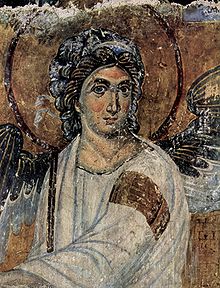Tempera
Tempera
Tempera, also known as egg tempera, is a permanent, fast-drying painting medium consisting of colored pigment mixed with a water-soluble binder medium (usually a glutinous material such as egg yolk or some other size). Tempera also refers to the paintings done in this medium. Tempera paintings are very long-lasting, and examples from the first centuries CE still exist. Egg tempera was a primary method of painting until after 1500 when it was superseded by the invention of oil painting. A paint commonly called tempera (though it is not) consisting of pigment and glue size is commonly used and referred to by some manufacturers in America as poster paint.
Fresco
Fresco is any of several related mural painting types, done on plaster on walls or ceilings. The word fresco comes from the Italian word affresco [afˈfresːko], which derives from the Latin word for fresh. Frescoes were often made during the Renaissance and other early time periods. Buon fresco technique consists of painting in pigment mixed with water on a thin layer of wet, fresh lime mortar or plaster, for which the Italian word for plaster, intonaco, is used. A secco painting, in contrast, is done on dry plaster (secco is "dry" in Italian). The pigments require a binding medium, such as egg (tempera), glue or oil to attach the pigment to the wall.
You received this message because you are subscribed to the Google Groups "2top-manitotasy-3" group.
To unsubscribe from this group and stop receiving emails from it, send an email to 2top-manitotasy-3+unsubscribe@googlegroups.com.
To view this discussion on the web visit https://groups.google.com/d/msgid/2top-manitotasy-3/CADVsWiiV2bQHpMr_9qk%3D%2BKQHpyMjEe7Nh790gLvD24XCpNZhpA%40mail.gmail.com.

Comments
Post a Comment